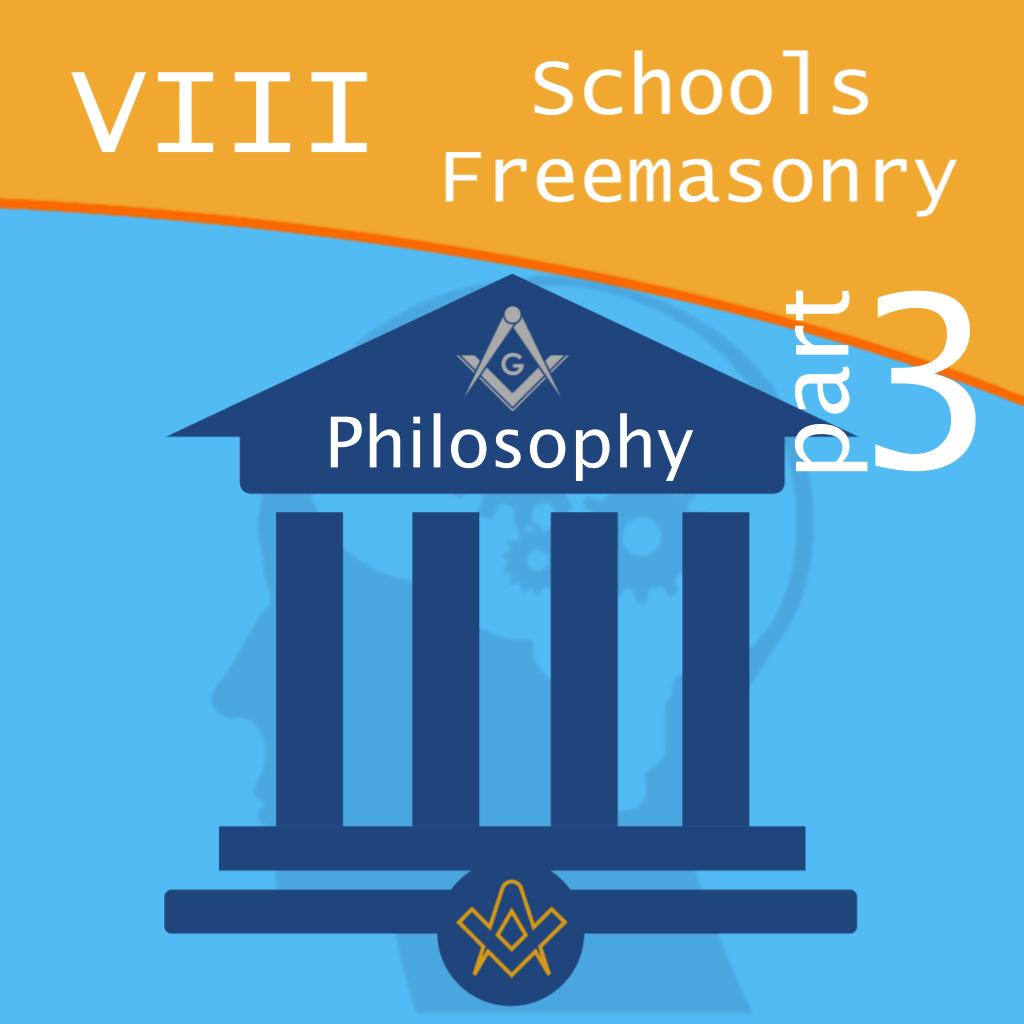The Philosophy of Masonry – Religion. Following on from Part 2 of The Eight Schools of Freemasonry, we explore the Religious School of the Rev. George Oliver.
To recap on our earlier articles:
Part 1 – William Preston’s philosophy of Masonry was in its relation to knowledge.
Part 2 – Karl Krause’s was a philosophy of Masonry in its relation to law and government.
Part 3 – Rev. George Oliver’s is a philosophy of Masonry in its relation to religion.
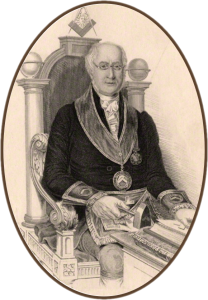
George Oliver, D.D. (1782–1867) – English cleric, schoolmaster, topographer, and writer on Freemasonry. He authored over 20 books on the subject of Freemasonry and was the editor of other prestigious titles by William Preston, Jonathan Ashe, and William Hutchinson.
IMAGE LINKED: wikimedia Attribution 4.0 International (CC BY 4.0)
The following is extracted and abridged from Roscoe Pound’s seminal work ‘Lectures on the Philosophy of Freemasonry’.
These lectures were first delivered before the Harvard chapter of the Acacia fraternity in the year 1911-12, except the lecture on Krause, which was first delivered before the Grand lodge of Nebraska in 1908, and was originally printed in the Proceedings of the body for that year.
Afterwards all five lectures, revised and corrected, were published in successive numbers of the Builder, from January to May, 1915.
They were subsequently published as a book by the National Masonic Research Society, Anamosa, Iowa.
[Karl] Krause‘s philosophy is concerned chiefly with the relation of Masonry to the philosophy of law and government. Oliver’s philosophy of Masonry deals rather with Masonry in its relation to the philosophy of religion.
In order to understand this, we need only note that Krause was by profession a philosopher and that the main work of his life was done in the philosophy of law and of government while, on the other hand, [George] Oliver was a clergyman.
As in [William]Preston‘s case, Oliver’s general philosophical ideas came to him ready-made. He flowed with the philosophical current of his time. He did not turn it into new channels or affect its course as did Krause.
Hence here, as with Preston, we may conveniently consider Oliver’s philosophy of Masonry under three heads:
1. The man.
2. The time.
3. His Masonic philosophy as a product of the two.
The dominant philosophy everywhere when Oliver wrote was what is known as romanticism.
In England, which at this period was still primarily taken up with religious rather than with philosophical or scientific questions, romanticism was especially strong.
Thinkers of the generation after Kant objected to his critical philosophy on the ground that it lacked vitality.
They asserted that the living unity of the spirit was violated by his analyzings and distinguishings.
They pointed to religious faith on the one hand and to artistic conception and creation on the other hand as methods which unlike the critical philosophy did full justice to life.
In other words, the age of reason in which Preston wrought and wrote was over and for a season at least men ceased to expect all things of reason, intellect and knowledge and began to expect all things of what they called spirit.
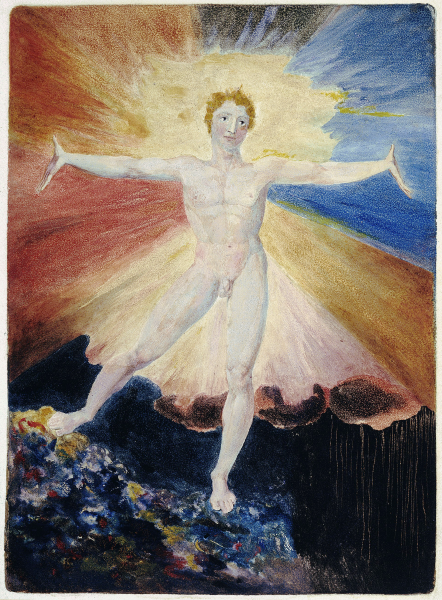
Albion Rose by William Blake, one of the most famous ‘Romanticism Era’ painters.
IMAGE LINKED: wikimedia Attribution 4.0 International (CC BY 4.0)
The younger thinkers especially were filled with enthusiasm at this idea of deducing all things from spirit and did not see that they were simply seeking for a new philosopher’s stone.
They expected through the idea of the spirit to establish a complete unity of all things, to break down the existing separation between science, religion, and art and to reconcile all discords.
Such an idea of knowledge may rightly be called romantic. It stands before us sublime and distant. It rouses our enthusiasm or our zeal to achieve it and influences us by its exaltation rather than by any prospect which it affords us of clear and sober realization.
That a whole generation should have been content to put its ideal of knowledge in this form seems difficult to explain even by reaction from the over-rationalism of the preceding century.
Probably the general upheaval brought about by the French Revolution must be taken into account and the golden age of poetry which accompanied this philosophical movement must not be overlooked.
Indeed, the connection between the romantic philosophers, the romantic poets and the romantic musicians is very close.
It is not an accident that what I may fairly call romantic Masonry appears at the same time.
This will be manifest especially when I come to speak of Oliver’s views as to the relation of Masonry to religion.
What, then, were the characteristics of the philosophy of the time and place in which Oliver wrote?
1. Speculation and imagination were the chief organs of thought. The poetic passed for the only real. Enthusiasm passed for scholarship.
2. Reason abdicated for a season. Conviction, intuition, and faith were regarded as justifying themselves.
3. In the same way tradition became something which justified itself. This is seen particularly in the so-called Oxford movement and the Catholic reaction in England. It is seen also in the position of the time as to the English constitution which [Charles] Dickens has satirized in the person of Mr. Podsnap.
4. Reconciliation of Christianity with philosophy became a recognized problem. For example, Coleridge took this for his chief work.
All of these features may be seen in Oliver’s Masonic writings. The defects of his historical writing, for example, which have utterly debased popular Masonic history are the defects of a romanticist.
A warm imagination and speculative enthusiasm carried him away. In common with his philosophical teachers, he had thrown off the critical method and had lost the faculty of discriminating accurately between what had been and what he would like to believe had been.
On the other hand, in Masonic philosophy, where pure speculation was allowable, these qualities had a certain value. Mill says of [Samuel Taylor] Coleridge that his was one of the great seminal minds of his time.
In the same way Oliver, more than anyone else set men to thinking upon the problems of Masonic philosophy. His style is agreeable. He is always easy to read and often entertaining.
A multitude of readers, who would be repelled by Krause’s learned but difficult pages, have rejoiced in Oliver.
Hence, he has given a form and direction to Masonic speculation which still persist.
Turning to Oliver’s philosophy of Masonry three important points may be noted:
1. His theory of the relation of Masonry to religion.
2. His theory of Masonry as a tradition coming down to us from a pure state prior to the flood.
3. His theory of the essentially Christian nature of our institution.
Let me take these up in order.
1.
It has been said that reconciliation of knowledge with religion and unifying of religion with all other human activities was a favorite undertaking of the romantic philosophy.
It was natural, therefore, that a clergyman should be attracted to this type of thought and that a zealous churchman and enthusiastic Mason who had learned from Preston, whose book he edited, that Masonry was knowledge, should convert the problem into one of relating Masonry to religion and of reconciling them.
Oliver’s mode of doing this was highly ingenious. Religion and Masonry, he would say, are identical in their end and they are identical in their end with knowledge.
Each is a manifestation of the spirit, the absolute, that is of God. God, he would say, is manifest to us, first, by revelation and thus manifest we know Him and know ourselves and know the universe through religion.
Second, He is manifest to us by tradition, and in this way, we know Him and know ourselves and know the universe through Masonry.
Third, He is manifest to us through reason, and in this way, we know Him and know ourselves and know the universe through knowledge or, as we have come to call it, science. In common with the romanticists, he sought to throw the entire content of life into one interconnected whole; and this he found in God or in the absolute.
Accordingly, to him Masonry was one mode of approach to God, the other two being religion and science.
If Krause’s triad was law, religion, morals, given effect by State, Church, Masonry; Oliver’s is revelation, tradition, reason, expounded, handed down, developed and interpreted by religion, Masonry, and science.
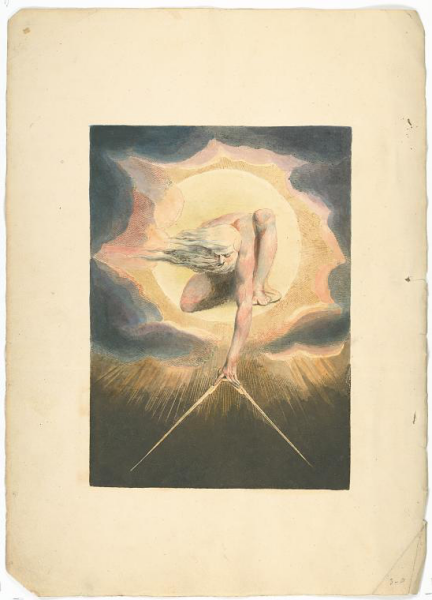
Europe – A Prophecy. William Blake, 1794.
IMAGE LINKED: New York Public Library Digital Collection Attribution 4.0 International (CC BY 4.0)
2.
Oliver’s theory of Masonry as a system of tradition seems to have been derived from Hutchinson. The latter deserves a moment’s digression.
William Hutchinson (1732-1814), an English lawyer, is perhaps the earliest Masonic philosopher.
In 1774 by permission of the Grand Lodge, which then insisted upon a right to censor all Masonic writing. Hutchinson published his chief Masonic work entitled “The Spirit of Masonry”. Oliver himself has said that this book was:
“the first efficient attempt to explain in a rational and scientific manner the true philosophy of the order.”
Hutchinson’s doctrine was that the lost word was symbolical of lost religious purity due to corruptions of the Jewish faith.
He held that the master’s degree symbolized the new law of Christ taking the place of the old law of Judaism which had become dead and corrupt.
By a bit of fanciful etymology, he derived Hiram (Huram) from the Greek heuramen (we have found it) and Acacia from the Greek alpha privative and Kakia (evil) — Akakia, freedom from evil, or freedom from sin.
Thus, he says, the Master Mason “represents a man under the Christian doctrine saved from the grave of iniquity and raised to the faith of salvation.”
Hutchinson influenced Hemming, who wrote the lectures of the Ancients and a trace of this influence may be seen in America in the interpretation of the blazing star in our lectures.
Clearly enough Oliver got his cue from Hutchinson. But Hutchinson had identified religion and Masonry.
This Oliver, as a clergyman of the established church, could not allow. Instead, Oliver sought to unify them, that is while keeping them distinct to make them phases of a higher unity, to make them expressions of what is ultimately, though not immediately, one.
This he did as has been seen by regarding each as a mode of approach to God. That conception led to his theory of Masonry as a body of tradition.
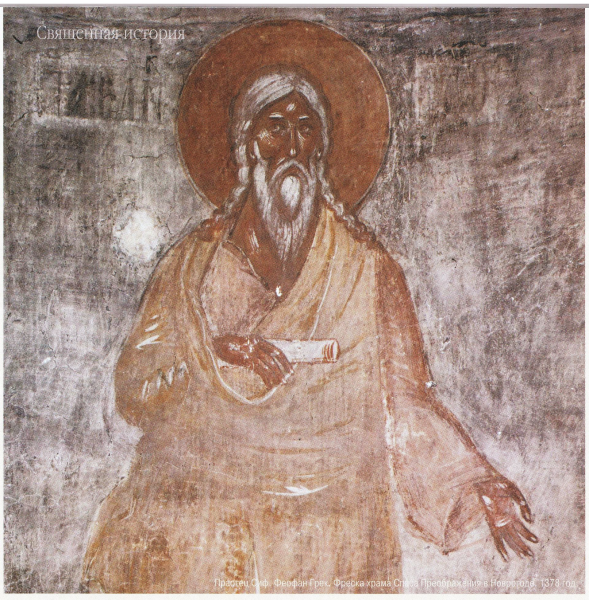
Seth the Patriarch. Feofan Grek – Old reproduction, Public Domain
IMAGE LINKED: wikimedia Attribution 4.0 International (CC BY 4.0)
Briefly stated Oliver’s theory is this. He held that Masonry was to be found as a body of tradition in the earliest periods of history as recorded in Scripture.
This tradition according to his enthusiastic speculations was taught by Seth to his descendants and was practised by them as a pure or primitive Masonry before the flood.
Thus, it passed over to Noah and his descendants and at the dispersion of mankind was divided into pure Masonry and spurious Masonry.
The pure Masonry passed through the patriarchs to Solomon and thence to the present institution.
On the other hand, the pure tradition was corrupted among the pagans and took the form of the mysteries and initiatory rites of antiquity.
Accordingly, he held, we have in Masonry a traditional science of morality veiled in allegory and illustrated by symbols.
3.
Again taking his cue from Hutchinson, though the old charges to be true to holy church gave him some warrant — Oliver insisted that Masonry was strictly a Christian institution.
He believed of course that Christianity was foretold and, in a way, revealed in the Old Testament and that the doctrine of the Trinity, for example, was clearly expounded therein.
In the same way he held that the earliest of Masonic symbols also taught the doctrine of the Trinity and that the Masonic references to the Grand Architect of the Universe were references to Christ.
Indeed, in his system this was necessary. For if religion, which to him could mean only the Christian religion, and Masonry were to be unified it must be as setting before us different manifestations of the same God.
There could be but one God and that triune God, the God of his religion, he held was made known to us by revelation, by tradition and by reason.
Thus, Oliver’s interpretation of revelation determined his interpretation of the other two.
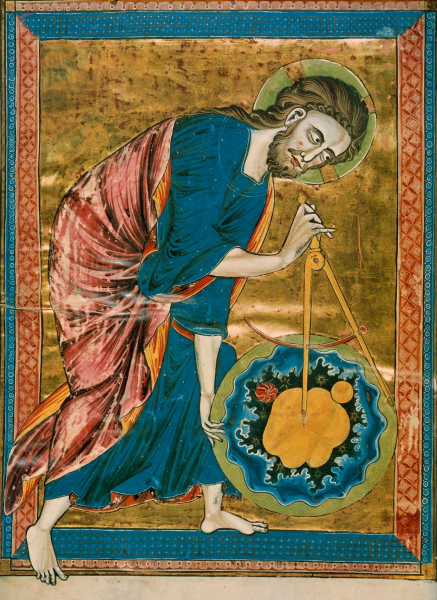
God the Geometer – The Great Architect of the Universe
IMAGE LINKED: wikimedia Attribution 4.0 International (CC BY 4.0)
If we bear this in mind, we may accept his general philosophy without accepting this particular doctrine.
For it needs only to postulate a more universal and more general religion than he professed, a religion above sects, creeds, and dogmas to hold that such a religion along with Masonry and along with reason leads to God.
Moreover, Hindu and Mahommedan may each put his own interpretation on revelation and join in believing in these three modes of knowing the absolute. Mackey reproaches Oliver for narrowness and sectarianism.
But the possibilities of his Masonic philosophy are as broad as could be desired. It was too soon in 1840 to ask a clergyman to go further in its application than he went.
What then are Oliver’s answers to the three fundamental questions of Masonic philosophy?
1. What is the end of Masonry, for what does the institution exist?
Oliver would answer, it is one in its end with religion and with science. Each of these are means through which we are brought into relation with the absolute.
They are the means through which we know God and his works.
2. How does Masonry seek to achieve its end?
Oliver would answer by preserving, handing down and interpreting a tradition of immemorial antiquity, a pure tradition from the childhood of the race.
3. What are the fundamental principles by which Masonry is governed in achieving its task?
Oliver would say the fundamental principles of Masonry are essentially the principles of religion as the basic principles of the moral world.
But in Masonry they appear in a traditional form. Thus, for example, toleration in Masonry is a form of what in religion we call charity; universality in Masonry is a traditional form of what in religion we call love of one’s neighbor.
As has been said, Krause’s was a philosophy of Masonry in its relation to law and government.
Preston’s was a philosophy of Masonry in its relation to knowledge. Oliver’s is a philosophy of Masonry in its relation to religion.
Neither of the others has had a tithe of the influence which Oliver’s philosophy has exerted upon Masonic thought.
And on the whole his influence has been valuable and stimulating. A critic has said that “all he had to give was transcendental moonshine which shed a new light on old things for many a young doubter and seeker, but which contained no new life.”
In a sense this is so. Oliver’s Masonic philosophy is an obvious product of a clergyman in the age of the romantic philosophy who had read and reflected upon Hutchinson.
And yet it is not true that there is no new life in Oliver. Except for Krause nothing so well worthwhile has been pointed out for Masonry as the end which Oliver found for us.
I cannot but feel that it is a great misfortune that his philosophy is being peddled out to a new generation in grandiloquent fragments through Grand Lodge orations and articles in the Masonic press instead of being apprehended as a whole.
Article by: Philippa Lee. Editor

Philippa Lee (writes as Philippa Faulks) is the author of eight books, an editor and researcher.
Philippa was initiated into the Honourable Fraternity of Ancient Freemasons (HFAF) in 2014.
Her specialism is ancient Egypt, Freemasonry, comparative religions and social history. She has several books in progress on the subject of ancient and modern Egypt. Selection of Books Online at Amazon

Lectures on the Philosophy of Freemasonry
By: Roscoe Pound
From the pen of one of the true Masonic literary giants comes this thought provoking collection of five lectures focusing on the Masonic philosophy taught by classic Masonic writers such as Albert Mackey, Albert Pike, George Oliver and others. This is Masonic education at its finest. Originally delivered between 1908 and 1912, the five lectures were independently published in The Builder Magazine in 1915. This is a photographic reproduction of the 1815 edition.

The Theocratic Philosophy of Freemasonry: 12 Lectures
By: Rev. George Oliver
This is a reproduction of a classic text optimised for kindle devices. We have endeavoured to create this version as close to the original artefact as possible. Although occasionally there may be certain imperfections with these old texts, we believe they deserve to be made available for future generations to enjoy.

The Discrepancies of Freemasonry
By: Rev. George Oliver
This scarce antiquarian book is a facsimile reprint of the original. Due to its age, it may contain imperfections such as marks, notations, marginalia and flawed pages. Because we believe this work is culturally important, we have made it available as part of our commitment for protecting, preserving, and promoting the world’s literature in affordable, high quality, modern editions that are true to the original work.
Recent Articles: Eight Schools of Freemasonry
 8 Schools of Freemasonry - Romantic P8 We end this series with the 'Romantic School'. Not a flowery tribute but one that explores the various 'romantic' theories as to the origins of Freemasonry, such as the Biblical aspects, the stone masons guilds, the Knights Templar. |
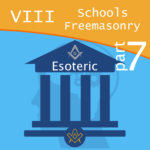 8 Schools of Freemasonry - Esoteric P7 The Esoteric School – Arthur Edward Waite viewed Freemasonry as a form of mystical teaching. He taught that enlightenment was achieved through the perfection of the self via the study of arcane knowledge and practice of occult rites. |
 8 Schools of Freemasonry - Historic P6 A dedication to fact-based historical writings as opposed to the 'traditional' or 'romantic' history, led a group of prominent Freemasons to form what would become known as the 'Authentic School' of Freemasonry. |
 8 Schools of Freemasonry - Philosophy P5 To finish with Roscoe Pound's invaluable work on the Philosophies of Freemasonry, we look at his final summing up: A Twentieth-Century Masonic Philosophy: The Relation of Masonry to Civilisation. |
 8 Schools of Freemasonry - Philosophy P4 The Philosophy of Masonry – Metaphysics and Symbolism. Following on from Part 3 of The Eight Schools of Freemasonry, we move on to Albert Pike, whose Masonic spiritual philosophy was concerned with Symbolism. |
 8 Schools of Freemasonry - Philosophy P3 The Philosophy of Masonry – Religion. Following on from Part 2 of The Eight Schools of Freemasonry, we explore the Religious School of the Rev. George Oliver. |
 8 Schools of Freemasonry - Philosophy P2 Following on from Part 1 of The Eight Schools of Freemasonry which discussed William Preston's School of Masonic Education, we explore the Philosophical School of Karl Christian Friedrich Krause. |
 8 Schools of Freemasonry - Philosophy P1 For what does Masonry exist? What is the end and purpose of the order? - Roscoe Pound's Lectures on the Philosophy of Freemasonry (1915), is probably one of the most concise and worthy explanation as to the subject. |
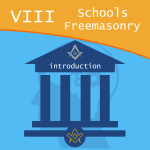 8 Schools of Freemasonry - Introduction Follow this series as examine the 'Eight Schools of Freemasonry' that have developed over the centuries since its founding in 1717. This month we outline the series and the Masonic Conception of Education. |
masonic knowledge
to be a better citizen of the world
share the square with two brothers

click image to open email app on mobile device


